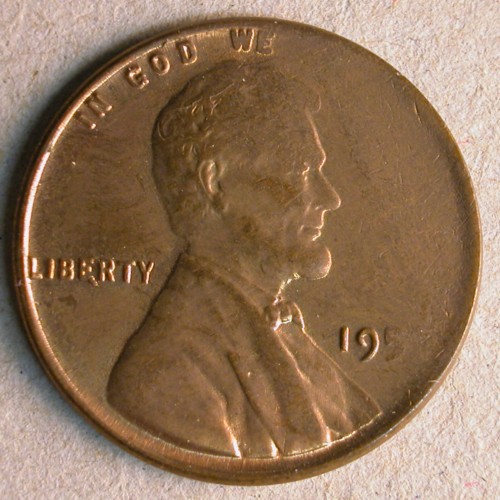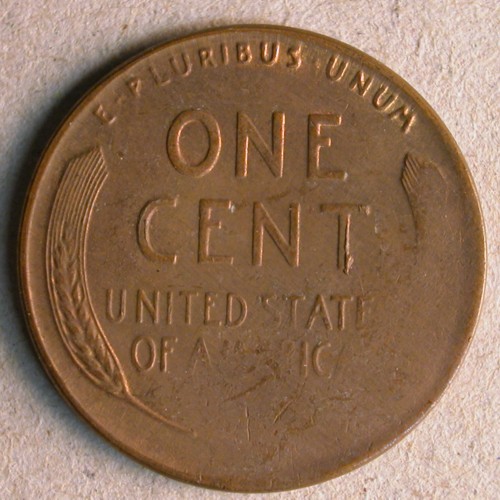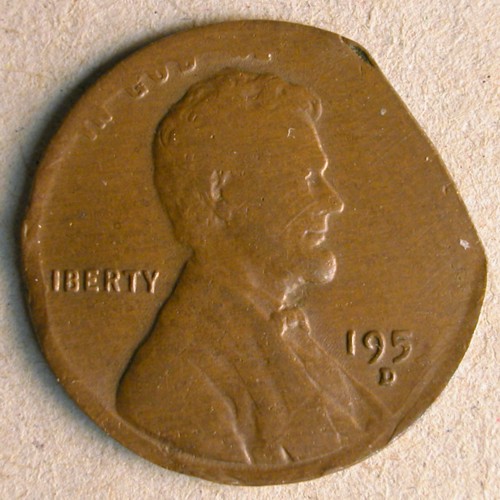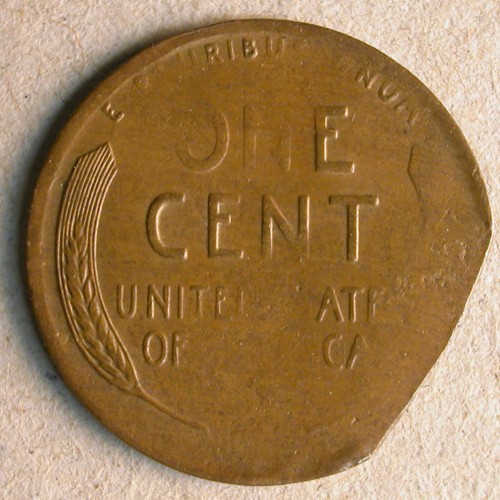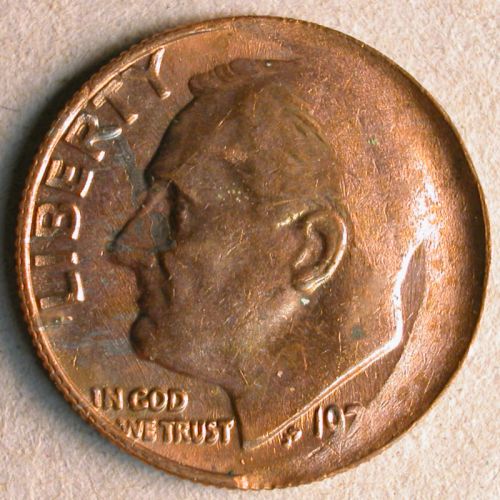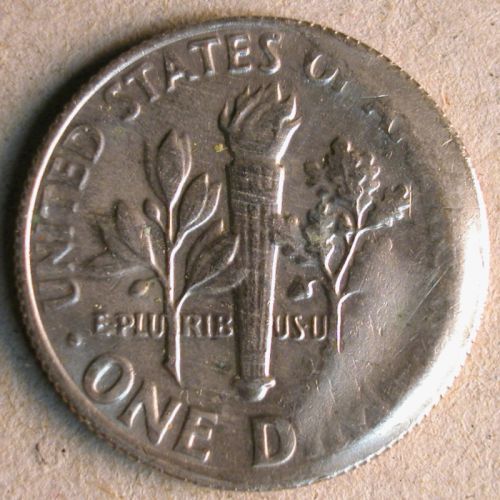Part V. Planchet Errors:
Rolling Mill Errors:
Tapered Planchets
Definition: A planchet that thins out at one pole due to a mishap in the rolling mill. These errors are invariably underweight. A number of hypotheses have been advanced to explain these errors.
It has been proposed that these errors are caused by a tilted roller. Problem is, if a roller is tilted down at one end it will also be tilted up at the other end. This should result in an equal number of abnormally heavy coins. But we never find an equal number of heavy and light coins in any year, let alone an increased number of heavy coins in years where tapered planchet errors are common.
Another possibility is that the gap between the rollers shrinks during a pass through the rolling mill. This will create a dip in the middle of the strip. Tapered planchet errors will be derived from the sloping sides of the die while conventional rolled-thin errors will be derived from the bottom of the dip.
Quite a bit of evidence points to many tapered planchet errors being derived from the leading or trailing end of the strip. The leading edge might be intentionally thinned for easier feeding into the rolling mill. Alternatively, the leading or trailing ends may be thinned due to decreased resistance to the pressure of the rollers; this would hinge on a failure of a mechanism that maintains the gap between the rollers.
In Lincoln cents, tapered planchet errors are sometimes accompanied by rolled-thin errors, straight clips, or both. The presence of a straight clip would be consistent with an origin at the leading or trailing end of the strip.
In clad coins, tapered planchet errors are almost always accompanied by partial or full missing clad errors. These missing clad errors are invariably heavier than a standard missing clad error. The absence of a clad layer is due to one of the clad strips ending prematurely at the trailing end of the strip or falling short at the leading edge of the strip.
This partially dated cent from the 1950s has a typical tapered planchet error. It weighs 2.40 grams. The 1950s produced a large number of cents with tapered planchet errors.
This 1955-D cent was struck on a tapered, rolled-thin, and straight-clipped planchet. It weighs 1.84 grams. The presence of a straight clip supports an origin from the leading or trailing end of the strip.
This partially-dated dime was struck on a tapered planchet that was also missing its obverse clad layer. It weighs 1.92 grams, more than a conventional missing clad dime without a taper. The excessive weight, combined with the taper, indicates that the clad strip fell short at the beginning of the strip or ended prematurely at the end of the strip.
